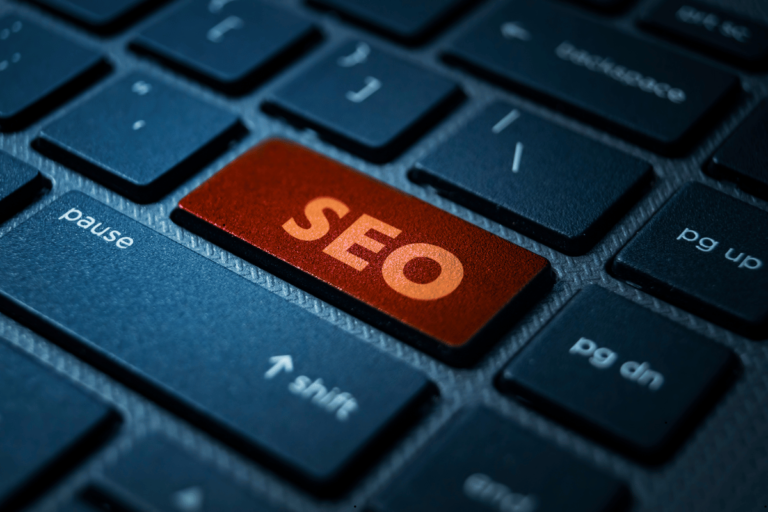Creating High-Converting Sales Funnels
Unlock the secrets to creating high-converting sales funnels with our comprehensive guide.
By understanding the customer journey, identifying key conversion points, and crafting compelling offers and CTAs, you can implement a seamless sales flow and leverage retargeting strategies for maximum impact.
Learn how to analyze and optimize performance to drive unparalleled results.
Elevate your sales funnel strategy and transform your business’s revenue generation potential.
Key Takeaways
- Understanding the customer journey is crucial for creating high-converting sales funnels.
- Identifying key conversion points and optimizing the checkout process can increase overall conversion rate.
- Crafting a compelling offer and call-to-action tailored to the target audience enhances the perceived value of the offer.
- Implementing seamless sales flow, personalization, and responsive design improves user experience and increases conversion rates.
Understanding the Customer Journey
Understanding the customer journey is essential for optimizing sales funnels and improving conversion rates. By analyzing customer engagement and purchase behavior at each stage of the journey, businesses can gain valuable insights into their customers’ decision-making processes.
Customer engagement encompasses all interactions a customer has with a brand, from initial awareness to post-purchase support. It is crucial to understand how customers engage with various touchpoints such as social media, email campaigns, and website interactions. By tracking these interactions, businesses can tailor their sales funnels to better meet customer needs and preferences.
Moreover, understanding purchase behavior is integral to shaping an effective sales funnel. By analyzing when, why, and how customers make purchasing decisions, businesses can optimize their sales processes to guide customers seamlessly from consideration to conversion. This insight allows businesses to address potential pain points or barriers that may hinder the purchasing decision. Additionally, it enables the implementation of targeted strategies to enhance customer experience and drive higher conversion rates.
Ultimately, a deep understanding of the customer journey empowers businesses to create tailored sales funnels that resonate with their target audience, resulting in improved customer satisfaction and higher sales performance.
Identifying Key Conversion Points
To create high-converting sales funnels, it’s crucial to identify key conversion points.
This involves conducting a thorough funnel bottleneck analysis to pinpoint areas where prospects are dropping off.
Additionally, optimizing the checkout process is essential to minimize friction and maximize conversions.
Funnel Bottleneck Analysis
Identifying key conversion points in the sales funnel requires a thorough bottleneck analysis. This involves identifying conversion barriers and improving funnel efficiency. By conducting a comprehensive analysis, businesses can pinpoint the specific stages where prospects are dropping off or failing to convert. This allows for targeted optimization efforts to be implemented, ultimately increasing the overall conversion rate and maximizing the funnel’s effectiveness.
| Conversion Point | Bottleneck Analysis |
|---|---|
| Landing Page | High Bounce Rates |
| Product Page | Low Add-to-Cart Rates |
| Checkout Process | Abandoned Carts |
| Thank You Page | Low Upsell Rates |
The table above outlines potential conversion points and their associated bottleneck analysis. Addressing these specific areas can lead to significant improvements in the overall performance of the sales funnel.
Optimize Checkout Process
The optimization of the checkout process involves identifying key conversion points that directly impact the overall sales funnel performance.
Streamlining payment and reducing friction are critical aspects of this optimization.
One key conversion point to focus on is the simplicity and ease of the payment process. This includes minimizing the number of steps required to complete a purchase, offering various payment options, and ensuring a seamless transition from cart to completion.
Additionally, reducing friction at the checkout stage involves addressing any potential obstacles or concerns that may deter a customer from finalizing their purchase. This could involve providing clear and transparent information about additional costs, offering guest checkout options, and implementing trust signals such as secure payment badges.
Crafting Compelling Offer and CTA
Crafting a compelling offer and call-to-action (CTA) is an essential aspect of creating high-converting sales funnels.
An irresistible value proposition that addresses the needs and desires of the target audience is crucial for capturing their attention and driving action.
Additionally, a clear and compelling CTA guides prospects towards taking the desired next steps, ultimately leading to increased conversions and sales.
Irresistible Value Proposition
Crafting a compelling offer and CTA is essential for creating an irresistible value proposition that drives high-converting sales funnels. To achieve this, value proposition clarity is paramount. The value proposition should clearly communicate the unique benefits and advantages of the product or service, addressing the customer’s needs and pain points. It should answer the question, ‘Why should the customer choose this product or service over others?’
Additionally, implementing effective customer engagement strategies is crucial. This involves understanding the target audience, their preferences, and behaviors to tailor the offer and CTA accordingly. Engaging and resonating with customers at every touchpoint in the sales funnel enhances the perceived value of the offer, making it more compelling and irresistible.
Ultimately, a well-crafted value proposition, coupled with strategic customer engagement, significantly boosts conversion rates.
Clear, Compelling Call-To-Action
Implementing a clear and compelling call-to-action is crucial for driving conversions in sales funnels. Persuasive copywriting and effective design are essential elements to consider when crafting a compelling offer and call-to-action. The table below outlines the key components of an effective call-to-action, along with the importance of testing variations and tracking results to optimize conversion rates.
| Key Components of a Compelling CTA | Importance |
|---|---|
| Clear and concise messaging | High |
| Visually appealing design | High |
| Strategic placement on the page | Medium |
| Urgency and incentive | High |
Testing variations of the call-to-action, such as different wording or design elements, and tracking the results are imperative for refining and improving its effectiveness. This iterative process is crucial for maximizing conversions within the sales funnel.
Implementing Seamless Sales Flow
To achieve a seamless sales flow, it is essential to align every stage of the funnel with the customer’s journey and purchasing behavior. Streamlining communication and enhancing user experience are crucial elements in this process.
-
Personalized Communication: Tailoring communication to the specific needs and preferences of the customer can significantly enhance the sales flow. Utilize customer data and segmentation to deliver targeted messages at each stage of the funnel.
-
Simplified Navigation: An easy and intuitive navigation system within the sales funnel can enhance the user experience, making it simpler for customers to move through the stages and complete their purchase.
-
Integrated Touchpoints: Ensuring that all touchpoints, including social media, email, and website interactions, are seamlessly integrated can help maintain a consistent and cohesive experience for the customer.
-
Responsive Design: Implementing a responsive design across all platforms and devices is essential for creating a seamless sales flow. This guarantees that the customer’s experience remains consistent and optimized regardless of the device they are using.
Leveraging Retargeting Strategies
Utilizing retargeting strategies is a crucial component in optimizing sales funnels for higher conversion rates. By implementing retargeting tactics, businesses can effectively engage with potential customers who have shown interest in their products or services but have not yet made a purchase.
One key aspect of successful retargeting is audience segmentation. This involves categorizing website visitors into different groups based on their behavior and interests, allowing for more personalized and targeted retargeting efforts.
Effective retargeting tactics involve displaying tailored ads to specific audience segments based on their previous interactions with the business’s website or content. By segmenting the audience, businesses can deliver highly relevant and compelling messages to potential customers, increasing the likelihood of conversion. Moreover, audience segmentation enables businesses to create customized retargeting strategies for different segments, addressing their unique needs and concerns.
Analyzing and Optimizing Performance
When analyzing and optimizing performance in sales funnels, tracking and evaluating key metrics is essential for identifying areas of improvement. Performance metrics such as conversion rates, click-through rates, average order value, and customer acquisition cost play a crucial role in understanding the effectiveness of a sales funnel. By closely monitoring these metrics, businesses can pinpoint where potential bottlenecks or inefficiencies exist within their funnels, allowing for targeted optimizations.
-
Conversion Rates: Tracking the percentage of visitors who take the desired action within the funnel provides insight into its overall effectiveness.
-
Click-Through Rates: Evaluating how many users progress from one stage of the funnel to the next helps identify potential points of friction or disinterest.
-
Average Order Value: Understanding the average amount spent by customers can guide strategies for upselling or increasing purchase frequency.
-
Customer Acquisition Cost: Calculating the cost of acquiring a customer relative to their value aids in determining the funnel’s profitability.
Implementing A/B testing strategies can further enhance performance optimization by testing different elements within the funnel to identify the most effective variations. Through continuous analysis and refinement, businesses can ensure their sales funnels are operating at peak efficiency.
Conclusion
In conclusion, creating high-converting sales funnels requires a deep understanding of the customer journey, strategic identification of key conversion points, and the crafting of compelling offers and CTAs.
Implementing a seamless sales flow and leveraging retargeting strategies are essential for success.
Finally, analyzing and optimizing performance is crucial for continued success.
Just as a skilled artist carefully selects and blends colors to create a masterpiece, creating high-converting sales funnels involves careful planning and execution to achieve exceptional results.




